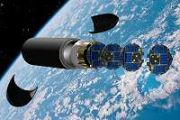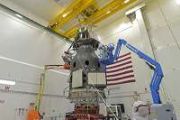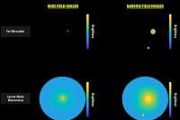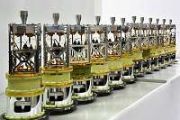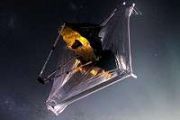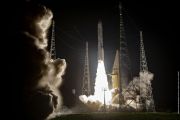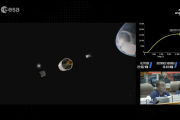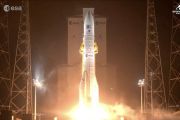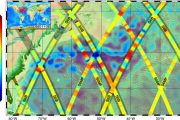
Copernical Team
Seeds in space: Plant research on Artemis I mission

How will we grow food in space? That's one question Michigan State University's Federica Brandizzi has been particularly interested in solving.
Brandizzi, an MSU Foundation Professor in the College of Natural Science and the MSU-DOE Plant Research Laboratory, will be sending seeds on the Artemis I mission to better understand how to grow food during space travel.
"This is really about understanding how we can establish and sustain life outside of this planet," Brandizzi said. "We need to have plants that can survive long-term space travel for generations."
But plants grow differently in space than they do on Earth. Over the past few decades, scientists have been working to compensate for those changes by getting a better understanding of plant biology and development away from our home planet.
From previous experiments, scientists have learned that space flight affects organisms' building blocks like amino acids that keep seedlings strong on Earth. The same amino acids would also be nutritious for people who eat the plants.
So Brandizzi's lab has selected seeds that are enriched with those amino acids and is sending those into space along with regular seeds.
Artemis launch brings us closer to space exploration goals

On Monday, Aug. 29, NASA plans to launch its Orion spacecraft from the world's most powerful rocket for a trip around the moon. This launch of the uncrewed Artemis 1 mission is a step toward the goal of landing people on the moon in 2025.
"With a successful launch of Artemis 1, NASA and the U.S. will reclaim the capability to launch humans to the moon," said Bradley L. Jolliff, the Scott Rudolph Professor of Earth and Planetary Sciences in Arts & Sciences at Washington University in St. Louis and director of the McDonnell Center for the Space Sciences.
"We lost that capability nearly 50 years ago when the last of the Saturn V rockets were retired after the Apollo 17 mission. Artemis 1 will pave the way for the next generation of astronauts to once again explore a world other than our own."
Artemis represents the next great leap in human exploration of space, beginning with a sustainable return to the moon, Jolliff said.
"In this case, 'sustainable' means that the Artemis missions will not be Apollo-like sorties," he said.
Fungal experiment to launch as Artemis I payload

An experiment prepared by the U.S. Naval Research Laboratory (NRL) will launch as part of NASA's scheduled Artemis I mission to orbit the moon Aug. 29.
The NRL experiment will use samples of fungi to investigate effects of the deep space radiation environment outside of Earth's protective magnetosphere.
Mapping the moon's surface for NASA missions

The first phase of NASA's Artemis mission, an uncrewed test flight around the moon, was scheduled to launch this Monday (29 August 2022). The third phase, scheduled for 2025, will see humans land on the moon for the first time in more than 50 years.
Professor Jan-Peter Muller and Ph.D. student Alfiah Putri (both UCL Mullard Space Science Laboratory) were commissioned by NASA's Jet Propulsion Laboratory (JPL) to create a 3D model and image of a possible landing site known as Aristarchus—a crater 40km wide and nearly 2.7km deep that was originally selected as the landing site for the canceled Apollo 18 mission.
The team used a photogrammetry technique they pioneered to derive a detailed 3D model, at a resolution of one meter, from a series of 14 stereo images (where pictures are taken of the same scene at slightly different angles).
Professor Muller says that "better quality maps and models of the moon's surface are important to minimize risks and maximize the safety of astronauts. Our techniques, developed over decades, provide the most accurate images and models currently possible.
NASA Artemis1 to carry ASU CubeSat into space
Use this form if you have come across a typo, inaccuracy or would like to send an edit request for the content on this page. For general inquiries, please use our contact form. For general feedback, use the public comments section below (please adhere to guidelines).
Please select the most appropriate category to facilitate processing of your request
Godspeed, Uhura: A bit of Star Trek's Nichelle Nichols will go to space

Nichelle Nichols, who blazed a trail for Black actors as Lieutenant Uhura on the original "Star Trek," never got to go to space while she was alive—but her ashes and her DNA are due to reach the final frontier as early as this year.
The symbolic samples are scheduled to fly beyond the moon, along with the ashes of other dearly departed Star Trek pioneers such as James Doohan ("Scotty"); Majel Barrett Roddenberry ("Nurse Chapel"); the TV series' creator, Gene Roddenberry; and visual-effects wizard Douglas Trumbull.
To top it all off, Nichols' memorial journey will begin with the launch of a Vulcan rocket. "I'm sure she would have much preferred to go on the shuttle," said her son, Kyle Johnson, "but this was a pretty close second."
The "Enterprise" memorial mission is being organized by Houston-based Celestis, which has been making arrangements to fly its customers' cremated remains for a quarter-century.
JWST makes first unequivocal detection of carbon dioxide in an exoplanet atmosphere
 For the first time, astronomers have found unambiguous evidence of carbon dioxide in the atmosphere of an exoplanet (a planet outside our solar system).
The discovery, accepted for publication in Nature and posted online August 25, demonstrates the power of the James Webb Space Telescope (JWST) to deliver unprecedented observations of exoplanet atmospheres.
Natalie Batalha, professor
For the first time, astronomers have found unambiguous evidence of carbon dioxide in the atmosphere of an exoplanet (a planet outside our solar system).
The discovery, accepted for publication in Nature and posted online August 25, demonstrates the power of the James Webb Space Telescope (JWST) to deliver unprecedented observations of exoplanet atmospheres.
Natalie Batalha, professor The PI's Perspective: Extending Exploration and Making Distant Discoveries
 New Horizons remains healthy from its position deep in the Kuiper Belt, even as it speeds farther and farther from the Earth and Sun by about 300 million miles per year. The spacecraft is about 54 times farther from the Sun than Earth, which is about two billion miles farther out than our first science flyby target, Pluto, and about a billion miles farther out than Arrokoth, the Kuiper Belt obje
New Horizons remains healthy from its position deep in the Kuiper Belt, even as it speeds farther and farther from the Earth and Sun by about 300 million miles per year. The spacecraft is about 54 times farther from the Sun than Earth, which is about two billion miles farther out than our first science flyby target, Pluto, and about a billion miles farther out than Arrokoth, the Kuiper Belt obje A World of Firsts
 The Mars 2020 Mission is pushing the boundaries of what is possible on Mars. The most incredible part of working on Mars 2020, for me, has been the versatility of both the hardware and the operations team to push our spacecraft to achieve things they were not originally designed for.
The first example of this was the surprise extension of the Ingenuity Mars Helicopter's operations. Ingenui
The Mars 2020 Mission is pushing the boundaries of what is possible on Mars. The most incredible part of working on Mars 2020, for me, has been the versatility of both the hardware and the operations team to push our spacecraft to achieve things they were not originally designed for.
The first example of this was the surprise extension of the Ingenuity Mars Helicopter's operations. Ingenui Perseverance Makes New Discoveries in Mars' Jezero Crater
 Scientists got a surprise when NASA's Perseverance Mars rover began examining rocks on the floor of Jezero Crater in spring of 2021: Because the crater held a lake billions of years ago, they had expected to find sedimentary rock, which would have formed when sand and mud settled in a once-watery environment. Instead, they discovered the floor was made of two types of igneous rock - one that for
Scientists got a surprise when NASA's Perseverance Mars rover began examining rocks on the floor of Jezero Crater in spring of 2021: Because the crater held a lake billions of years ago, they had expected to find sedimentary rock, which would have formed when sand and mud settled in a once-watery environment. Instead, they discovered the floor was made of two types of igneous rock - one that for 



